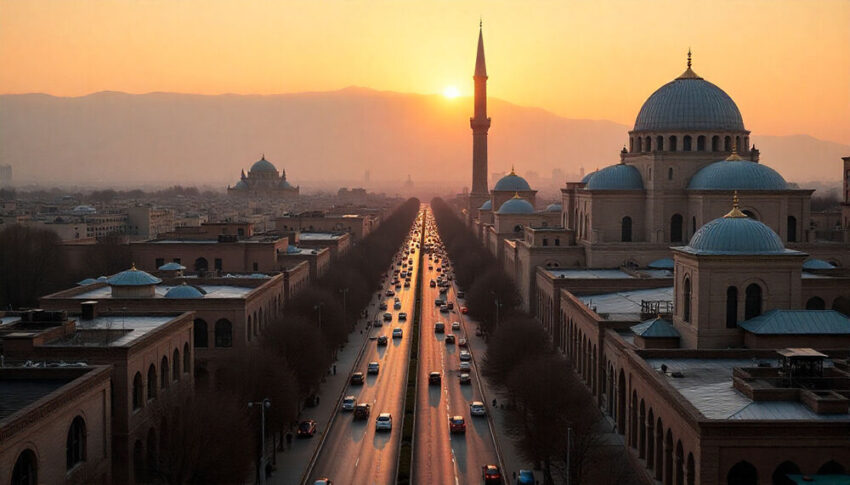A Historic Collaboration for Regional Connectivity
The Middle East is stepping into a new era of travel and cooperation as the United Arab Emirates joins hands with Saudi Arabia, Jordan, Israel, Oman, and Iran to unveil a network of new travel routes. This landmark initiative marks a turning point for tourism, trade, and cultural exchange in the region, bridging historical divides and opening doors to fresh opportunities for travelers and businesses alike.
This ambitious plan aims to create seamless travel experiences across the region — reducing flight times, increasing accessibility, and promoting shared prosperity. It symbolizes not only a shift in transport and tourism but also a growing spirit of unity among Middle Eastern nations that have long sought greater collaboration.
UAE Leading the Way in Regional Integration
For years, the UAE has been recognized as a hub of innovation and diplomacy. Now, it takes another major step forward by fostering travel partnerships that extend beyond borders. The government’s vision aligns perfectly with its national agenda of sustainability, economic diversification, and cultural diplomacy.

With Dubai and Abu Dhabi already serving as international gateways, the addition of new routes connecting major cities across Saudi Arabia, Jordan, Israel, Oman, and even Iran will further strengthen the UAE’s reputation as the heart of Middle Eastern connectivity.
This expansion will allow travelers to explore multiple destinations in a single trip — imagine flying from Dubai to Amman, then to Tel Aviv, Muscat, or Tehran with unmatched ease.

Economic Growth through Tourism and Trade
Tourism is one of the fastest-growing sectors in the region, and these new routes are expected to fuel it even more. The UAE’s strategic decision to collaborate with neighboring countries will bring in an influx of visitors looking for unique travel experiences — from Saudi Arabia’s futuristic NEOM city to Jordan’s ancient Petra and Israel’s cultural hotspots.
Airlines across the region are preparing to introduce new flight schedules, while hospitality and logistics sectors anticipate record-high demand. The collaboration is also expected to boost business travel, making trade fairs, conferences, and regional events more accessible than ever before.
According to industry projections, these new travel routes could generate billions in tourism revenue and create thousands of new jobs, further cementing the UAE’s role as a catalyst for regional economic growth.
A Step Toward Cultural and Diplomatic Harmony
Beyond tourism and economics, this initiative carries a powerful message of peace and cooperation. For decades, the Middle East has been seen through the lens of division, but today’s leaders are embracing collaboration as a means to a stronger, more stable region.
By joining forces with countries like Israel and Iran — once viewed as politically distant — the UAE showcases the transformative power of diplomacy and forward thinking. These routes are not just physical connections; they symbolize cultural bridges that can foster understanding among people of different faiths, traditions, and histories.
Travel has always been one of humanity’s greatest tools for building empathy. Now, with these routes, millions will have the chance to experience it firsthand.
Oman’s Role in the New Travel Network
Oman has emerged as a key player in this initiative, providing both geographical and cultural linkage between the Gulf and the rest of the Middle East. With its stunning landscapes and preserved heritage, Oman is positioning itself as a must-visit destination on this new travel map.
Muscat International Airport is expected to become a major transit point, offering travelers easy access to both the Arabian Peninsula and beyond. The collaboration will also strengthen Oman’s tourism offerings, from desert resorts to coastal adventures, helping the country attract more international visitors.
Saudi Arabia’s Expanding Tourism Vision
Saudi Arabia’s involvement in this travel revolution is no surprise. The Kingdom’s Vision 2030 has already set ambitious goals for attracting 150 million visitors annually by 2030. By connecting its cities with neighboring nations through efficient routes, Saudi Arabia can showcase destinations like AlUla, Riyadh, and Jeddah to a wider global audience.
The UAE’s partnership complements this vision, offering travelers the flexibility to explore the spiritual, modern, and natural wonders of Saudi Arabia with more convenience and connectivity than ever before.

Israel and Jordan: A Gateway to Shared Heritage
Israel and Jordan, two countries with deep historical and cultural significance, will see a surge in tourism thanks to these new connections. Tourists flying from the UAE can now easily access Jerusalem, Tel Aviv, and Amman — experiencing a blend of ancient history and modern innovation.
The move will also support cross-cultural tours that highlight shared heritage and traditions. Imagine a travel route that lets visitors explore Petra, the Dead Sea, and Jerusalem — all within a few days. This is not just tourism; it’s storytelling through travel.
Iran’s Inclusion: A Sign of Changing Times
Perhaps the most surprising yet significant part of this announcement is Iran’s inclusion. Despite political challenges in the past, Iran’s participation marks a new chapter for regional diplomacy and tourism. The country’s vast cultural heritage — from the ruins of Persepolis to the bustling bazaars of Tehran — holds immense potential for global travelers.
By including Iran, the UAE sends a strong message: that cooperation and progress can transcend old barriers. The decision aligns with the region’s growing efforts to embrace dialogue and unity in pursuit of shared prosperity.
The Rise of Sustainable and Smart Travel
Sustainability lies at the core of this initiative. Many of the new routes will prioritize eco-efficient aircraft, carbon-reduction programs, and smart-travel technologies. The UAE’s aviation sector has already adopted AI-driven solutions for smoother check-ins, predictive maintenance, and eco-friendly operations — all of which will extend to partner routes.
This focus on green travel complements the UAE’s broader environmental goals, including its push toward net-zero emissions and sustainable tourism. As travelers seek eco-conscious experiences, these routes offer both convenience and conscience.
New Opportunities for Airlines and Businesses
Emirates, Etihad, and Flydubai are expected to be at the forefront of this travel expansion. Collaborations with regional airlines in Saudi Arabia, Jordan, and Oman are likely to result in new code-sharing agreements, joint ventures, and loyalty programs that make travel more accessible and rewarding.

Beyond airlines, businesses in hospitality, transport, and entertainment stand to gain significantly. Hotels across the region are preparing special packages, while travel agencies and digital platforms are developing multi-destination itineraries catering to this new wave of regional tourism.
The Future of Travel in the Middle East
With these routes, the Middle East is transforming into one of the world’s most connected regions. The UAE’s leadership in this movement underscores its reputation as a nation that doesn’t just dream big — it acts boldly.
In the next few years, travelers can expect more than just new destinations. They will experience smoother visa processes, unified booking systems, and an overall sense of safety and hospitality that defines the modern Middle East.
A Vision of Unity and Progress
Ultimately, this initiative is about more than travel. It’s about people — their dreams, their stories, and their desire to explore and connect. By bringing together Saudi Arabia, Jordan, Israel, Oman, and Iran under one travel vision, the UAE is proving that progress comes through partnership.
This collaboration could redefine not just regional tourism but global perceptions of the Middle East — turning it from a crossroads of ancient civilizations into a beacon of modern connectivity and peace.
Do follow UAE Stories on Instagram
Read Next – UAE Leads a Wellness Revolution Blending AI, Sustainability, and Tradition















